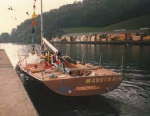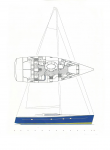doug748
Well-known member
An excellent YouTube channel and great resource for students of yacht design. Each Zoom session hosts a different top designer. Here is Julian Everitt with some trenchant views on:
Fractional rig - Fashionable because of rating advantage not fundamental performance.
Keels - Questions popular engineering design and the way racing boats are used outside their design envelope.
Chines - Often used because they are expected or purely to put more accommodation into a boat.
Anyway here he is:
Others in the series include Kevin Dibly, Ron Holland etc.
.
Fractional rig - Fashionable because of rating advantage not fundamental performance.
Keels - Questions popular engineering design and the way racing boats are used outside their design envelope.
Chines - Often used because they are expected or purely to put more accommodation into a boat.
Anyway here he is:
Others in the series include Kevin Dibly, Ron Holland etc.
.


